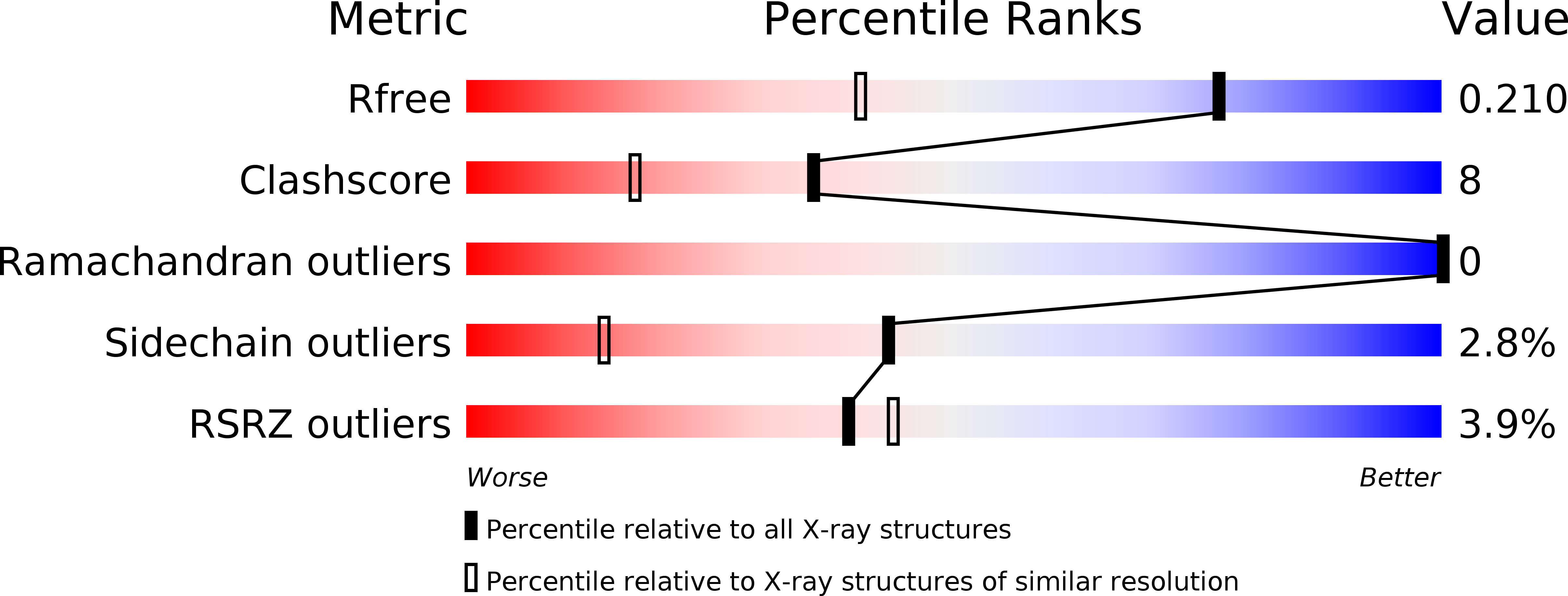
Deposition Date
2008-11-18
Release Date
2008-12-02
Last Version Date
2023-12-13
Entry Detail
PDB ID:
2W40
Keywords:
Title:
Crystal structure of Plasmodium falciparum glycerol kinase with bound glycerol
Biological Source:
Source Organism:
PLASMODIUM FALCIPARUM (Taxon ID: 36329)
Host Organism:
Method Details:
Experimental Method:
Resolution:
1.49 Å
R-Value Free:
0.21
R-Value Work:
0.16
R-Value Observed:
0.17
Space Group:
P 1 21 1


